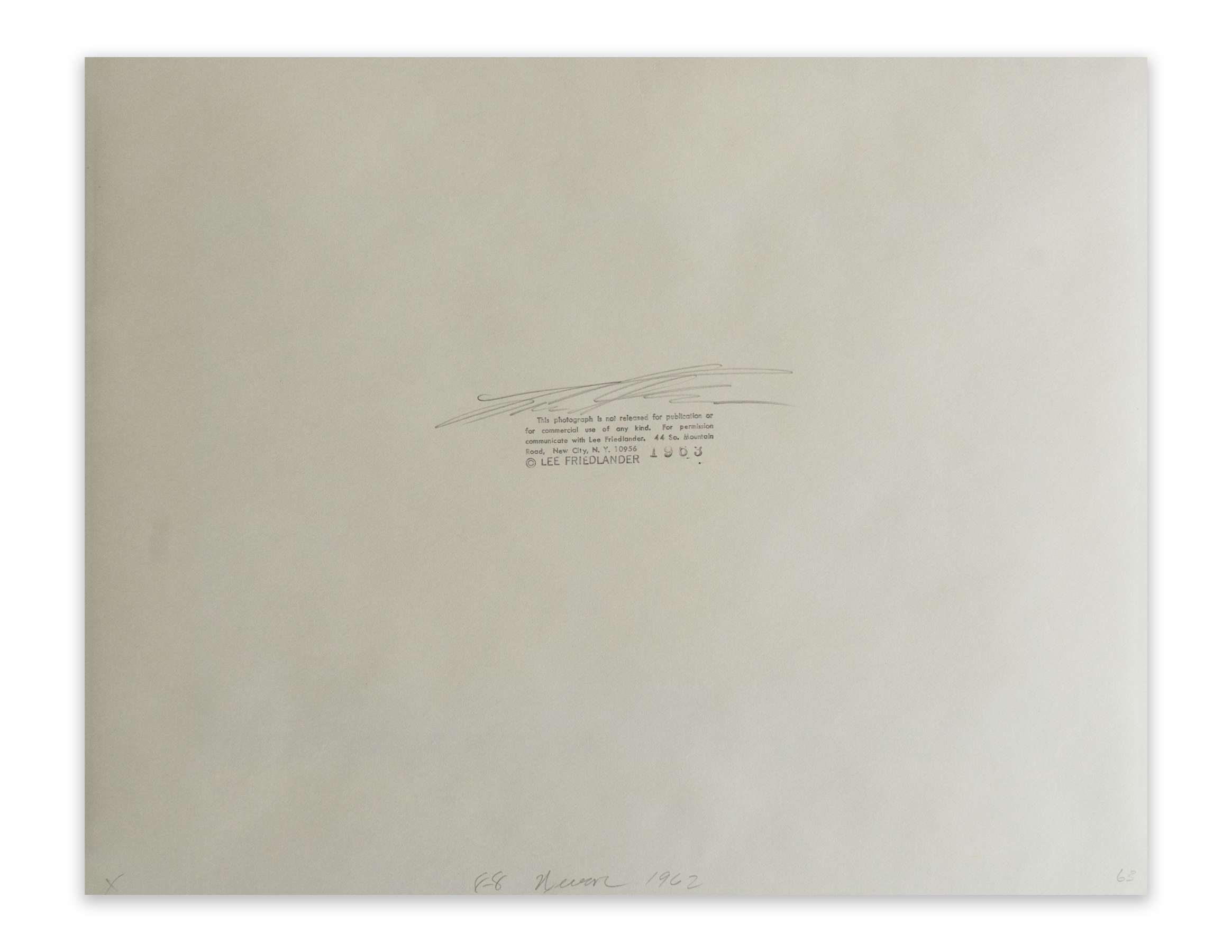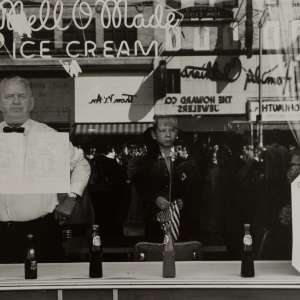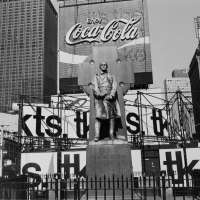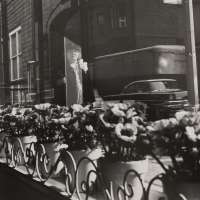Lee Friedlander
Lee Friedlander Lee Friedlander, an influential American photographer, is known for his innovative scenes of city streets which often feature candid portraits of people, signs, and reflections of himself in storefront windows. Friedlander has the ability to organize an endless amount of visual information in dynamic compositions and makes humorous and poignant images among the chaos of city life. Friedlander’s street photography captures the abrupt overlaps of light and content in urban landscapes. Born in 1934 in Aberdeen, Washington, Lee Friedlander began photographing when he was only fourteen years old. He studied photography at the Art Center School in Los Angeles from 1953 to 1955 and after that began to freelance. In 1956 he moved to New York City where he photographed jazz musicians for record covers. Friedlander's early work was influenced by photographers like Eugene Atget, Robert Frank, and Walker Evans. Friedlander worked primarily with a 35mm Leica camera and black and white film. In 1960, Friedlander was awarded a Guggenheim Fellowship to focus on his art and was awarded subsequent grants in 1962 and 1977. In 1963, the International Museum of Photography at George Eastman House mounted Friedlander’s first solo exhibition. Friedlander was a key figure in curator John Szarkowski’s 1967 “New Documents” exhibition at the Museum of Modern Art in New York City, both of which identified his photographs with those of other social landscape photographers such as Garry Winogrand, Bruce Davidson, Danny Lyon, and Diane Arbus. In 1973, Lee Friedlander's photographs were honored at the Rencontres d’Arles festival in France. In 2005 Friedlander was presented with the prestigious Hasselblad Award as well as a major retrospective of his career at the Museum of Modern Art, including nearly 400 photographs from the 1950s to the present; it was presented again in 2008 at the San Francisco Museum of Modern Art. Included among the many monographs designed and published by Friedlander himself are Sticks and Stones, Lee Friedlander: Photographs, Letters From the People, Apples and Olives, Cherry Blossom Time in Japan, Family and At Work. Starting in 2017, the artist and Yale University Press released an ambitious six-book suite collectively titled The Human Clay, a sweeping collection of street and environmental portraits culled and edited by Friedlander from his extensive archive, many not previously published. His work is held in major collections including, Art Institute of Chicago, George Eastman Museum, The Metropolitan Museum of Art, The Museum of Modern Art, The National Gallery of Art, San Francisco Museum of Modern Art, the Whitney Museum of American Art, among many others.









